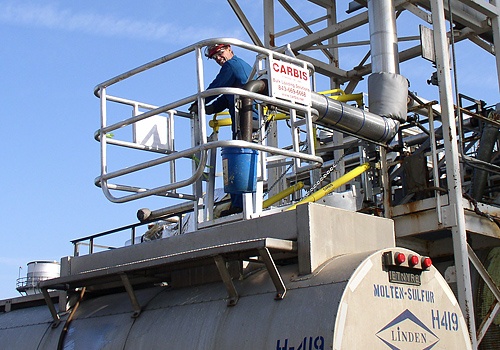 On a fundamental level, the effectiveness of your fall prevention equipment depends on two factors: First, do you have appropriate safety equipment for your work environment? Second, are your workers trained to correctly use the equipment during tasks?
On a fundamental level, the effectiveness of your fall prevention equipment depends on two factors: First, do you have appropriate safety equipment for your work environment? Second, are your workers trained to correctly use the equipment during tasks?
A third consideration is how your safety solution compares to others in your industry. In recent years, for example, the leading chemical companies have been raising their internal standards for employee safety, affecting the entire industry.
While smaller companies may be reluctant to invest in better fall prevention equipment, they tend to follow the Fortune 500 organizations. No company wants to cut corners that could result in safety hazards, accidents or even deaths, especially when others in the industry have taken steps to prevent those risks.
Tank Car Fall Prevention
The past 20 years have seen significant advances in fall prevention strategies for loading and unloading tank cars. A standard tank car has a 30-inch railing around the dome area where workers perform most loading and unloading tasks. People had assumed this railing was good enough, but now, companies throughout the loading industry are taking steps to eliminate fall hazards by plugging all holes and gaps in the loading area.
First, facilities started using ramps to access rail cars, and then progressed to elevating cages. Rail safety cages and enclosures provide the best fall prevention by eliminating any gaps through which an employee could fall. These safety cages and enclosures accommodate a variety of handrail systems and different crash box configurations.
Truck Fall Prevention
A truck presents different challenges in terms of fall prevention. Trucks are normally loaded from the top, and there’s always a risk of workers falling when using a truck ladder to access the top of the truck. But the larger issue is that a typical truck is equipped with little or no fall protection for workers.
To reduce this risk, companies tried bottom loading. While this approach keeps workers from having to climb to the top of the truck, bottom loading introduces different hazards, especially when dealing with chemicals. If your loading connections start leaking during the process, you could have a tank full of product flowing out with no way to stop it, resulting in wasted resources and a potentially catastrophic failure.
Many companies have since returned to top loading to mitigate spills and environmental hazards. Even if you overfill a tank truck, the loaded product or chemical stays in the vehicle’s tank, so the spill is minimal. But moving back to top loading means workers need a safe way to access the top of the truck.
The most effective fall prevention solution for top loading trucks is to create full enclosures. A full truck enclosure makes it easy for workers to access multiple hatches and eliminates the need for harness systems, improving safety for operators as well as improving throughput.
Investing in the right fall prevention equipment makes good business sense. It helps to improve employee safety, reducing the potential costs of citations and accidents. It also helps to reduce downtime due to accidents, which could drive additional productivity and throughput.
Is your company’s safety equipment keeping pace with industry standards? Download this guide from Carbis Solutions to discover strategies for a safer, more efficient workplace.



